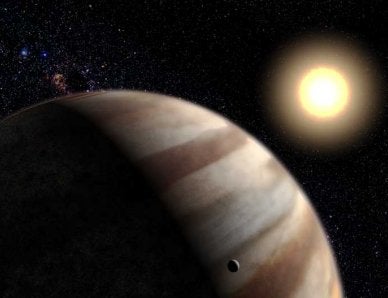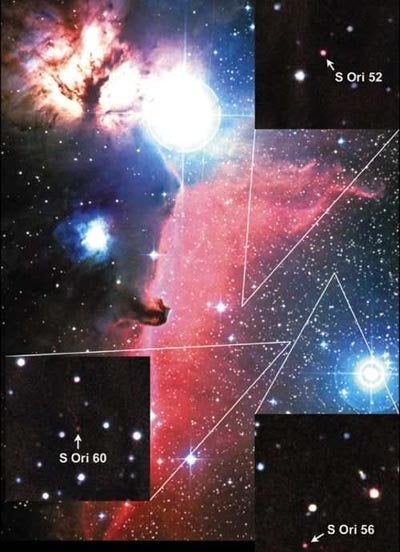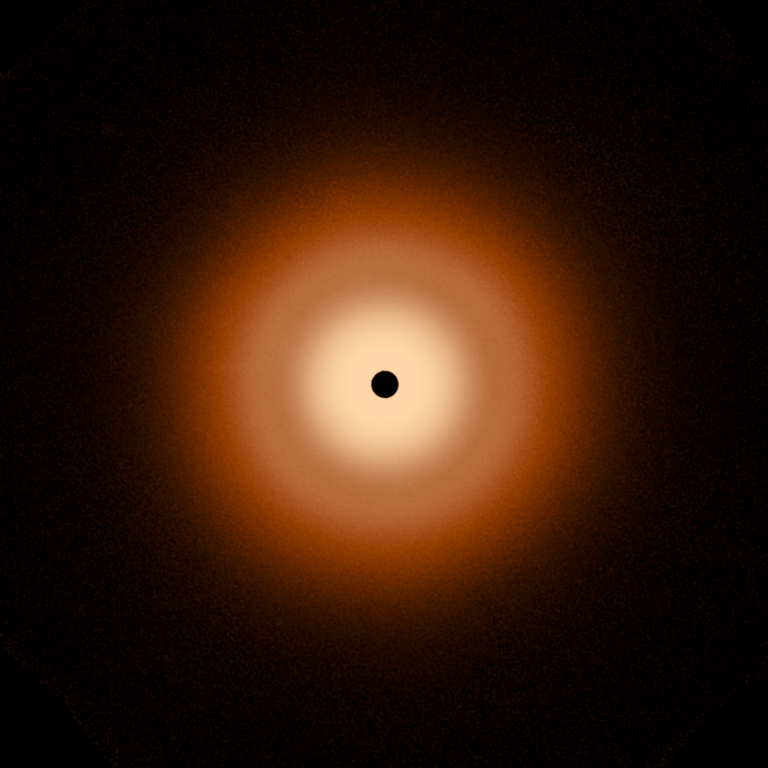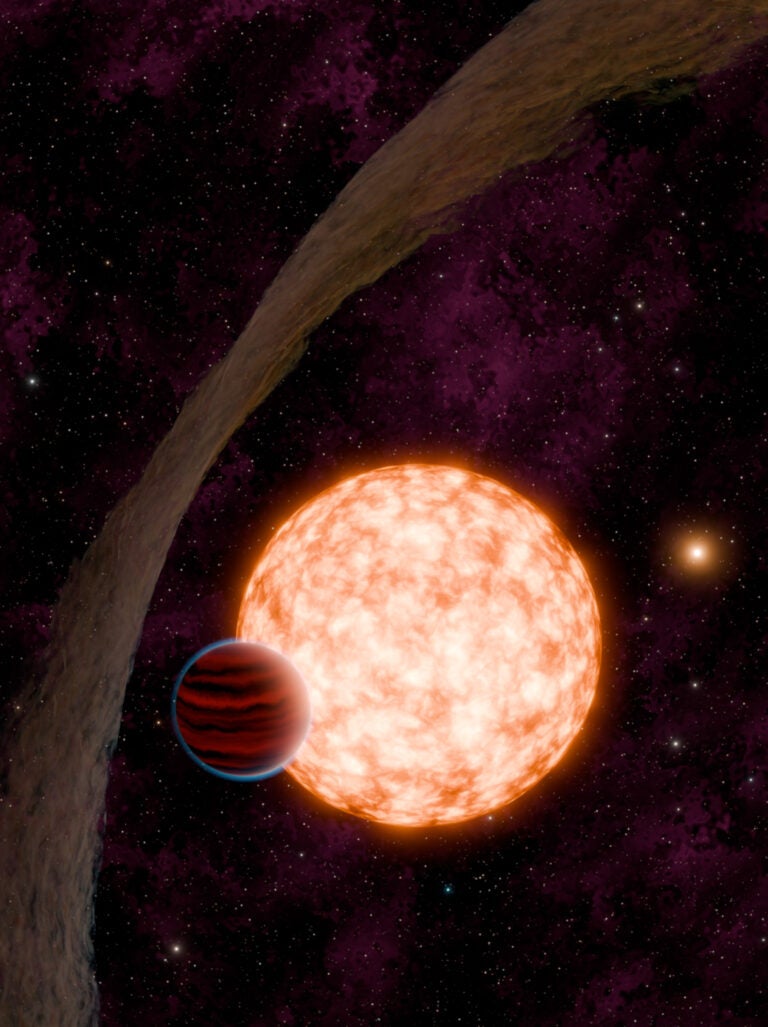While more than a hundred extrasolar planets have been found, none have been glimpsed directly — they have all been identified by their effects on their host stars’ light. The problem with sighting them has been known for decades — the reflected light of orbiting planets will be overwhelmed in the blinding glare of their host stars. Direct imaging of an extrasolar planet would be like spying a firefly next to a searchlight at a distance of 100 miles.
But the advent of large telescopes, quality infrared detectors, and adaptive optics in the 1990s means astronomers have a fighting chance of catching planets in their youth, when they are still warm and emitting respectable amounts of infrared light. At visible wavelengths, a star outshines its planets by a ratio of a billion to one. But in the infrared, a newborn star will outshine a Jupiter-size planet by a manageable 10,000 to one.
Four major teams, led by Ray Jayawardhana of the University of Michigan, Michael Liu of the University of Hawaii, Anne-Marie Lagrange of the Observatoire de Grenoble, France, and Bruce MacIntosh of the Lawrence Livermore National Laboratory, are running the race. All four groups are using the world’s largest telescopes — the 10-meter Keck telescopes, the 8.1-meter Gemini North Telescope, the 8.2-meter Subaru Telescope, and the 8.4-meter mirrors of the Very Large Telescope. These behemoths come equipped with adaptive optics, which filter out distortions caused by Earth’s atmosphere, so they have a better shot at resolving the exoplanets’ feeble glow. “You can only do this with big telescopes and adaptive optics from the ground or with Hubble from space,” says Jayawardhana.
This is where luck enters the picture. Within 300 light-years, astronomers have hundreds of young candidate stars to choose from. Each team has selected several dozen targets. “If you happen to be looking at the one nearby star out of 50 that has a Jupiter in the right orbit, then you got it,” says Jayawardhana. “The first one found will owe a lot to luck and being in the right place at the right time with good weather.”
It’s possible that one or more teams has already imaged an extrasolar planet. “We have a few tantalizing candidates that we are in the process of trying to confirm,” says Liu. The teams need to observe a candidate several times to make sure it is moving with the same speed and in the same direction as its host star, proving the two bodies are gravitationally bound. In addition, spectra can rule out candidates that are too cool — these might be background objects.
A team of Spanish astronomers, in fact, has imaged a faint object near the star Sigma Orionis. But the object appears to be about 180,000 AU from the star, and nobody has a clue how a planet could form at such a vast distance from a star. “It’s most likely a free-floater that has no connection with Sigma Orionis itself,” says Jayawardhana.
Sometime in the next year, Hubble and its new Advanced Camera for Surveys will be joining the fray. A team led by Bill Sparks of the Space Telescope Science Institute will aim Hubble at the two largest stars in the Alpha Centauri system. With a distance of only 4.3 light-years from Earth, the Alpha Centauri system is the closest star system to the sun. The two stars have an estimated age of 6 billion years, so any orbiting planets are likely too old to emit detectable infrared radiation — Hubble would have to pick up their reflected visible light. “The program details have not yet been crafted, but it’s reasonable to assume multiple visits will be required. Hence it will be quite a long time before we would have any results,” says Sparks.
In the meantime, ground-based telescopes will continue the search. “It’s incredibly exciting because for the first time we have the technical capability to image an extrasolar planet. This is science on the frontier,” says Jayawardhana.











